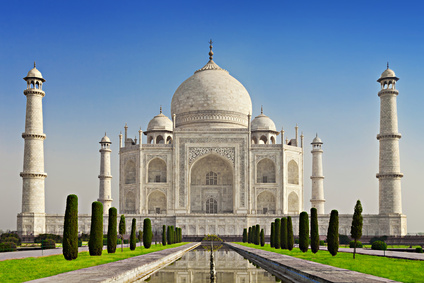“Rick Stein in India” is a TV program where celebrity chef, Rick Stein takes a six-episode trip through the great food regions of India learning about some of their cultural and native dishes. Stein is very eager to introduce new curries to his British audience and his travels about India provided his ample opportunity to do this.
He discovered the Tamil Nadu temple food and the Kerala houseboat hospitality, all while exploring India’s gourmet cuisine. While in Punjab and the Rajasthan, he unearthed new flavors and new dishes and discovered new ways of pairing spices and foods that will excite the palates of one and all.
In the commentary for the first episode, Stein notes that he spent three months in India studying and learning and wanted to dispel some of the myths about curry, which is apparently almost a national dish in the United Kingdom and a catch-all name for all Indian food.
The first episode finds Stein in showing off his kitchen which is on a house boat moored on a lagoon near Kerala. Stein demonstrates his knowledge of Indian traditions by allowing a pan of milk to boil over to bring good luck and then the show moves from Kerala to Calcutta (formally known as Kolkata, but many still have trouble remembering this).
In Calcutta, Stein’s first stop is Nizam’s which is famous for its kathi rolls, fluffy and light parathas filled with vegetarian or meat. Following this was a stop at a restaurant which Stein called a “hole in the wall”, but which served a delectable prawn cutlet fried in butter.
For the next scene, “Rick Stein in India” took a nod toward home and we see Angus Denoon from Angus Denoon’s Kolkata Street Food guiding Stein wearing his usual tartan hat. Stein’s comment here is that he would love to bring all his trainee chefs to taste this street food.
Denoon guides Stein through the street food scene of Calcutta beginning with the chura stall. Churas are sweets made of flattened rice, yoghurt, water, and sugar. Then to the pushkas or pani puri stall where these crispy balls are stuffed with tamarind water and mashed potatoes. The last stop is Angus’ trademark – the jhal muri. These are made of tomatoes, puffed rice, onion, coconut, and mustard oil. Stein compared the jhal muri to a savoury rice krispies square.
The last stop for Stein and Angus is for Indian sweets which are made from buffalo milk. Stein tried the misti doi which is the sweet yoghurt and is very good. Angus made the comment that these stalls must be clean and hygienic, otherwise they would lose their customers in the long run.
It is easy to notice the resourcefulness and the skill of the street vendors and chefs in the food stalls as they use any and all existing materials such as clay pots for misti doi, banana leaves for plates, and newspapers to wrap foods. There is very little waste in Calcutta.
Following the sojourn through the street food, it was back to experience more restaurant food, but in a little different locale. This visit was to Surichi, a place run by the all Bengal Women’s Union to help destitute women in Calcutta.
During this visit, Stein hung around the kitchen talking with the women as they made a simple curry. This association is private and takes in lost and abandoned female children when the Indian government fails to do so. The Union provides an education and helps develop social and technical skills as well including information technology, self-defense, the arts, and living skills.
While Bengali sweets are certainly delectable, it is fish, in particular fresh water fish that Bengalis are best known for. Stein spent a great deal of time near the River Hooghly watching as the fish were gathered and then made a visit to a well-known Bengali restaurant known as Kewpie’s to see how they prepared their Rui fish dishes.
The proprietor of Kewpie’s told Stein that making a fish dish was the way a bride showed off her culinary skills to her husband’s family.
After thoroughly studying Calcutta and learning its culinary secrets, “Rick Stein in India” then made its way down the cost of Coromandel toward Chennai. Stein focused on Anglo-Indian food in Chennai by preparing a pastiche of beef curry and then visiting the Madras Club where chefs demonstrated how to make mulligawtawny soup.
Following a spirited discussion at the Madras Club between club members and Stein about just how to define curry, Stein left and decided to visit a local Coromondel fishing village.
Stein was quite taken aback by the realization of just how hard the life is of the fishermen. He spent quite some time talking with the villagers about their food and how their prepare it and was very interested in the concept of blending dry and wet ingredients.
Now the Stein has returned from his trip, he is taking the six best curries he discovered and cooking them in a sort of taste competition against Chicken Tikka Masala, the United Kingdom’s most popular curry. These curries range from meat, vegetable, shellfish, fish, slow-cooked, or street food recipes, all gathered from his travels in India.
These six best curries will be judged by a panel of curry “experts” and a winner chosen. The judging will take place in Bradford, right in the heart of the British Asian community and Stein will be joined by a host of guests, all of whom love curry.







